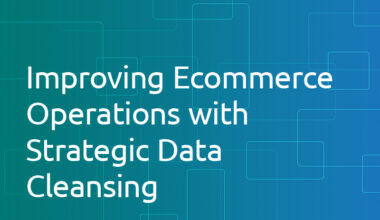The e-commerce industry is intensely competitive and perpetually evolving, with success hinging on the ability to understand and act on vast quantities of data. From product inventories and customer behaviors to sales trends and market fluctuations, e-commerce businesses are awash with data that, if properly harnessed, can unlock enormous opportunities. This is where data classification—a method of organizing and categorizing data—plays an instrumental role. By applying innovative data classification techniques, e-commerce businesses can extract actionable insights, enhance operations, and improve the customer experience.
Understanding Data Classification
At its core, data classification involves organizing data into predefined categories, thus simplifying its access, understanding, and utilization. In the context of e-commerce, this could mean categorizing products according to type, price, brand, or popularity. On the customer front, data may be segmented by factors such as demographics, purchase history, or behavioral patterns.
These classifications serve multiple functions, from enhancing the customer’s online shopping experience to informing the retailer’s strategic decisions. But to truly unlock the benefits, businesses should adopt innovative techniques and advanced technologies.
Innovative Techniques in Data Classification
1. Machine Learning Algorithms: Leveraging machine learning for data classification allows e-commerce businesses to categorize data more effectively and accurately. These algorithms can learn from patterns in the data and automatically apply those learnings to new data, improving classification over time.
2. Natural Language Processing (NLP): NLP, a field of artificial intelligence, enables computers to understand human language. It can be used to classify data based on written descriptions, reviews, or customer queries, providing valuable insights into customer sentiment and preferences.
3. Semantic Classification: This technique involves classifying data based on its meaning rather than its literal content. For instance, it might categorize products based on their purpose or use, enabling more intuitive product searches.
The Impact of Data Classification on E-commerce
Innovative data classification techniques can transform an e-commerce business in several ways:
1. Personalized Customer Experience: By understanding the nuances of customer behavior through data classification, businesses can create highly personalized shopping experiences. This can enhance customer satisfaction and loyalty, and increase sales.
2. Enhanced Searchability: Classifying product data can greatly improve the searchability of an e-commerce site, making it easier for customers to find and compare products.
3. Data-Driven Decision Making: Classification techniques can make sense of vast quantities of data, providing valuable insights to inform business strategies and decisions.
4. Efficient Inventory Management: Categorizing products effectively can simplify inventory management, helping businesses to anticipate demand and avoid overstocking or stockouts.
In the complex, data-rich world of e-commerce, innovative data classification techniques offer a way to cut through the noise and extract valuable insights. These techniques not only simplify the management of vast data volumes but also unlock opportunities for improved customer experiences, operational efficiency, and strategic decision making. In the race for e-commerce success, data classification is an essential tool, and one that retailers should leverage to its fullest potential.
Learn more about the power of product data classification here.
 1.416.619.5349 Ext.325
1.416.619.5349 Ext.325 






